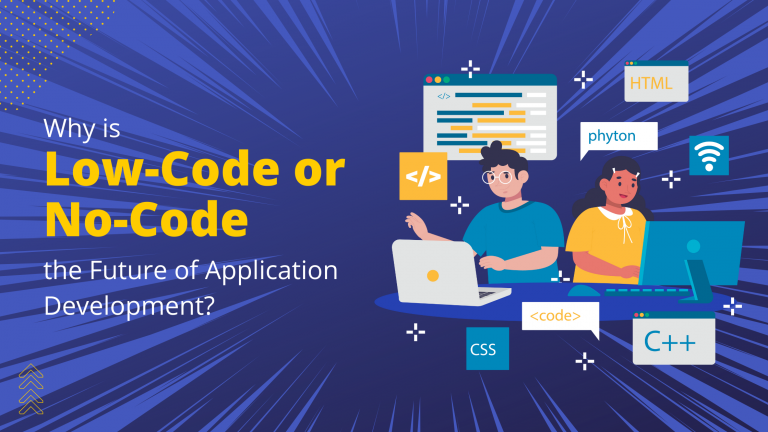Great Info To Picking Low-code platforms for application development
Benefits Of Low-Code Application Development In Terms Of Accessibility To Non-DevelopersThe following key factors make low-code programming accessible to those who are not developers.
Drag-and–Drop Builders : Low-code platforms provide drag-and-drop interfaces that allow non-developers, who do not requirement to write code to build visually-based applications. The process of developing applications is now easier for people with no technical background.
WYSIWYG: WYSIWYG editors are "What you see is what you Get" editors that permit users to create workflows and interfaces similar to the finished product. This makes it simpler to understand and use.
Simple Workflow and Logic Design
Visual Workflow Modelling: Users can use visual workflow to create business processes, application logic and flowcharts using models and visually-designed flowcharts. These methods are much more intuitive than the traditional coding methods.
Pre-built Logical Components: A lot of low-code platforms have built-in components for logic (e.g. conditions, loops) which are easily configurable. This means that there is no requirement to write complex programs.
Reusable Components and Templates
Libraries of pre-built templates: Many low-code platforms offer a library of templates for the most common types of applications that allow non-programmers to begin from a solid base and modify as they need to.
Reusable modules and widgets : By using reusable widgets or modules, the user can simplify the creation process, by eliminating the need for extensive technical expertise.
Guided Development & Tutorials
Step-by-Step instructions: Platforms offer instructions and help on screen for non-developers building applications.
Interactive Tutorials Interactive tutorials are hands-on and interactive and help users learn by doing. This boosts the confidence of users in the platform.
Integration with existing tools:
seamless integration: Low-code platform are designed to integrate seamlessly with the existing business tools, systems and software (e.g., ERP and CRM). This allows non-programmers with no experience in programming to create applications that work seamlessly with their current workflows.
APIs Connectors: APIs are integrated into apps to facilitate integration. This allows non-developers, who don't have programming skills, to connect with external services.
Collaboration Features:
Team Collaboration: Features like real-time collaboration, as well as shared workspaces allow non-developers to collaborate with professional developers, business analysts and other stakeholder groups effectively.
Access Control based on Role: Users who are not developers can be assigned roles with the appropriate access levels. This lets them contribute to the development without compromising security or functionality.
Automated Testing and Debugging
Low-code platforms usually come with a built-in testing and debugging tools which simplifies the process. Developers who are not developers can now ensure their application works correctly.
Platform highlights errors when they happen and provides solutions. This helps non-developers with solving problems.
The main benefit of developing applications using low-code in terms of accessibility to non-developers stems from its ability democratize the process of developing. Low-code platforms offer intuitive visual tools, guiding user experiences, and allow business users to actively take part in the creation, maintaining and updating applications. Read the top rated continue reading this for Low-code Platform for application development for more info including cross platform app dev, azure sql server, build with docker, rapid applications, mobile app development platforms, lowcode no code, azure sql databases, mobile development platforms, cross platform app development, sso azure and more.

Benefits Of Application Development With Low-Code In Governance And Security
Low-code app development provides several advantages for governance and security. This is vital to ensure that applications conform to laws, are safe and well-managed throughout their life. These are the main benefits: Centralized Governance:
Unified Management console: Low-code platform usually provides a central dashboard where administrators can control and monitor all applications to ensure consistency in governance throughout the organization.
Role-Based Access Control RBAC: These platforms come with powerful role-based controls that permit administrators to establish access policies. This ensures that only those with permission can alter or gain access to specific areas of the application.
Compliance and Regulatory Applicability:
Features of compliance: Many platforms that use low-code are built to conform with industry standards. They offer frameworks and tools that ensure applications meet the specifications.
Audit Trails and Logging: Complete logging, audit trails and logs are usually integrated into businesses which allows them to monitor changes and monitor access. They can also make sure that the organization is in compliance with both external and internal rules and regulations.
Increased Security Measures
Data Encryption : Low-code platforms usually provide data encryption built-in at rest and during transit. This guarantees that data sensitive information is secured.
Security Certifications: Many providers of low-code services have security certificates like ISO 27001 or SOC 2 to prove that they are able to meet the highest standards. These certificates provide additional assurances to users.
Automated security updates
Regular Security Updates and Patches Low-code platforms manage automated security patches, updates and upgrades. Applications are therefore protected from current threats without requiring developer intervention manually.
Security Monitoring - Continuous monitoring for security is typically included. This gives real-time information and alerts on security risks that could be a threat.
Data Governance
Data Access Policy: These systems let organizations define and enforce policies for access to data, while making certain that only authorized users can access data and the data is utilized in a safe manner.
Data Masking and Anonymization: Built-in tools to mask data and ensure the security of sensitive information, especially in testing environments and development environments.
Consistent Application Management
Development and deployment pipelines: Low-code platforms offer integrated development, including security checks. This provides security throughout the lifespan of an application.
Version Control - The integrated version control helps keep track of changes to applications and allows them to be reverted in the event of need. They also maintain the integrity and integrity of the software.
User Authentication, Authorization, and Authorization
Single Sign-On: The support for SSO as well as other sophisticated authentication methods eases the management of users as well as increases security.
Multi-Factor Authentication Most platforms have built-in support of multi-factor authentication. This adds an extra layer of security for applications.
Policy Enforcement and Compliance:
Low-code platforms have templates for policies predefined and can help organizations implement governance policies and security policies.
Tools for Monitoring Compliance: These tools offer continuous monitoring, reporting and analysis of compliance status. It is simpler to identify possible issues and take proactive steps.
Integration with Existing Security Infrastructure
seamless integration: Low-code platforms are designed to work with current security tools and infrastructure, such as identity management systems SIEM (Security Information and Event Management) solutions, and firewalls.
API Security: API integrated security makes sure that integrations with an external system are secure. Keep data safe and ensure application consistency.
Training and Best Practices:
A lot of platforms provide guidelines and best practice for developing secure applications. They help non-developers meet security standards.
Some lowcode providers provide assistance and security training to users to learn how to build and maintain a secure application.
The security and governance capabilities of low-code applications ensure that they are managed and built in a regulated and compliant way. These platforms provide the tools and frameworks necessary to protect sensitive data, enforce policies, and ensure compliance with regulatory requirements, all the while simplifying management and oversight of the process of developing applications. Follow the recommended Legacy application modernization with Low-code url for blog info including developing mobile apps, rapid application design, push notifications android, lowcode no code, push notifications, application modernization software, paas service, app modernization, paas service, application development platforms and more.

Benefits Of Low-Code Application Development In Terms Of Community Support And Vendor Support
Low-code platform development provides significant advantages, such as support from vendors and a community. This is essential in ensuring successful application development along with ongoing maintenance and continual improvement. These are the main benefits: Support
Comprehensive Technical Support:
Support Teams Dedicated to You: A lot of low-code platforms have access to dedicated support teams who can help with technical issues, troubleshooting, and guidance, ensuring that all issues are solved quickly.
Support is available 24/7. Many vendors provide around-the-clock assistance which is particularly beneficial for companies that operate in different time zones.
Training and Onboarding:
Vendors offer structured training courses such as webinars, tutorials and certifications to help users become familiarized with the system.
Customized Onboarding : Many vendors offer customized onboarding services which assist new customers integrate the platform and tailor it according to their specific needs.
Regular updates and improvements:
Continuous improvement: Low-code platform providers typically release regular updates which include the latest features, performance improvements, and security patches, ensuring that the platform remains cutting-edge and safe.
Feedback Integration Vendors integrate user feedback into the development cycle, making sure that the platform evolves to meet changing needs.
Comprehensive Documentation:
User documentation in detail Users can get answers to their issues by reading the detailed and well-organized guide that covers every aspect of the software starting from its basics to more advanced customization.
API References: API documentation is detailed and helps developers to integrate APIs with other platforms, and to further modify their applications.
Professional Consulting Services
Expert Consulting: Vendors typically provide consulting services that assist in the process of strategic planning architectural design, as well as complex implementations, ensuring that users have the ability to leverage the platform to its fullest potential.
Custom Development Services: A few vendors will offer customized development to develop functionalities or integrates for their clients that aren't easily accessible.
Community Support
Active User Community:
Forums and discussion boards Forums and discussion boards: A lot of low code platforms have vibrant online communities that let users ask questions, exchange solutions and share best practices.
User Groups and Meetings: Both local and virtual meetings and groups of users offer opportunities to learn to network, share information, and exchange experiences with others.
Collaboration and knowledge sharing:
Community-Contributed Resources: Users often share templates, modules, and extensions that they have developed, which can be reused or adapted by others, accelerating development and innovation.
Crowdsourced Problem Solving: The collective knowledge and experiences of the community can be an invaluable source for identifying issues and finding innovative solutions to complicated issues.
Learning and Development
Community-Led Training: Many communities host workshops, training sessions, and webinars, often conducted by experienced users who provide practical insights and advanced techniques.
Tutorials and online courses: Community members often develop and publish online tutorials, courses, and how-to guide, improving the educational resources available to all users.
Feedback and Influence
Product Feedback: Several community forums offer channels to give feedback to the vendors. This can influence new features and improvements.
Beta Testing Active communities might be eligible to take part. This lets them gain early access and to be involved in the design of the platform.
Recognition and Encouragement
Community Recognition Programs: Many vendors have recognition programs to recognize the contribution of active community members like MVP (Most Valuable Professional) programs.
Peer Support Peer Support: Community members typically offer support to other members through sharing their knowledge and providing guidance for users who are not as knowledgeable. This helps create a more collaborative and supportive atmosphere.
Overall the combination of strong support from the vendor and an active, engaged community provides an entire support network for low-code application development. Users will be able to gain access to the experts, resources, and collaboration opportunities they require to develop applications, deploy, keep them up to date, and enhance their applications.
